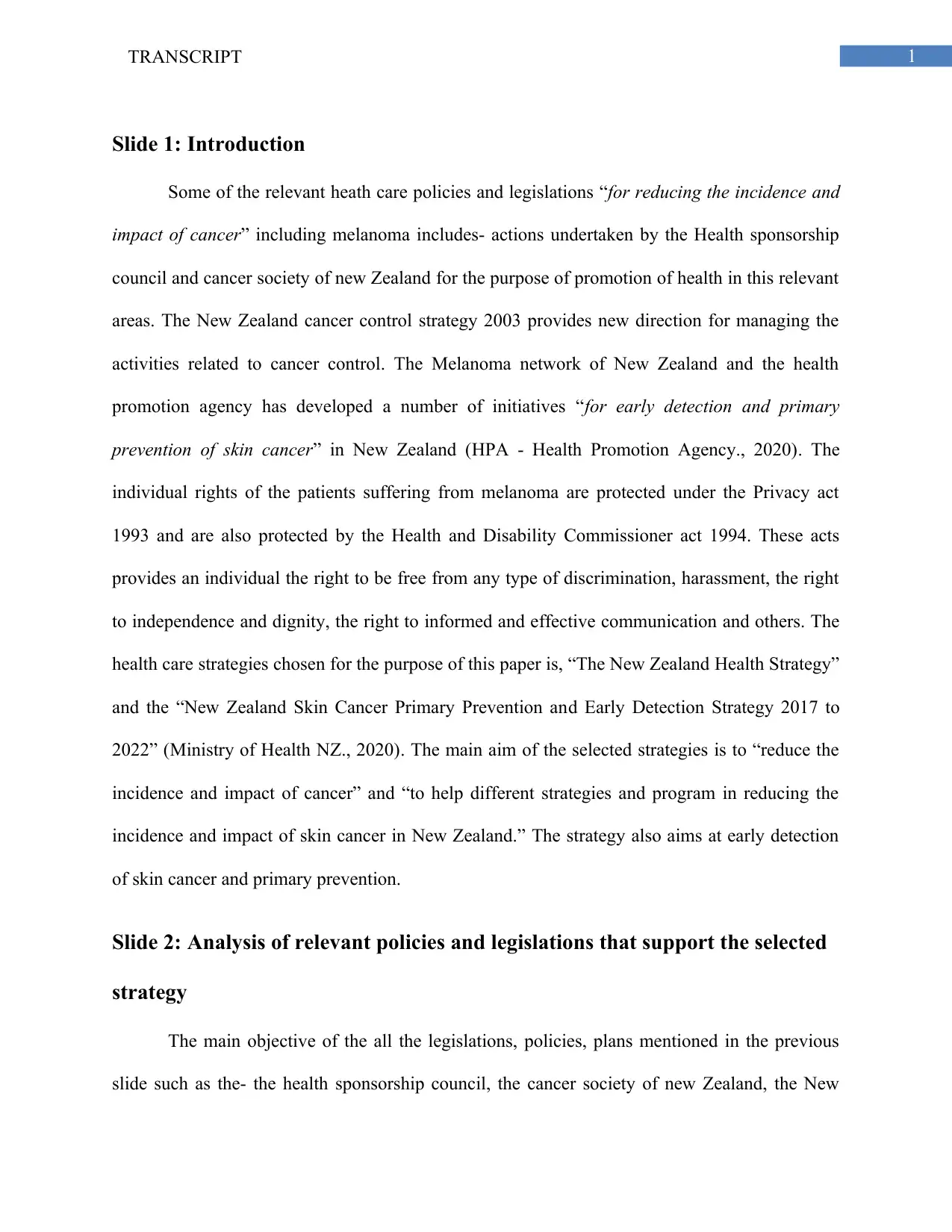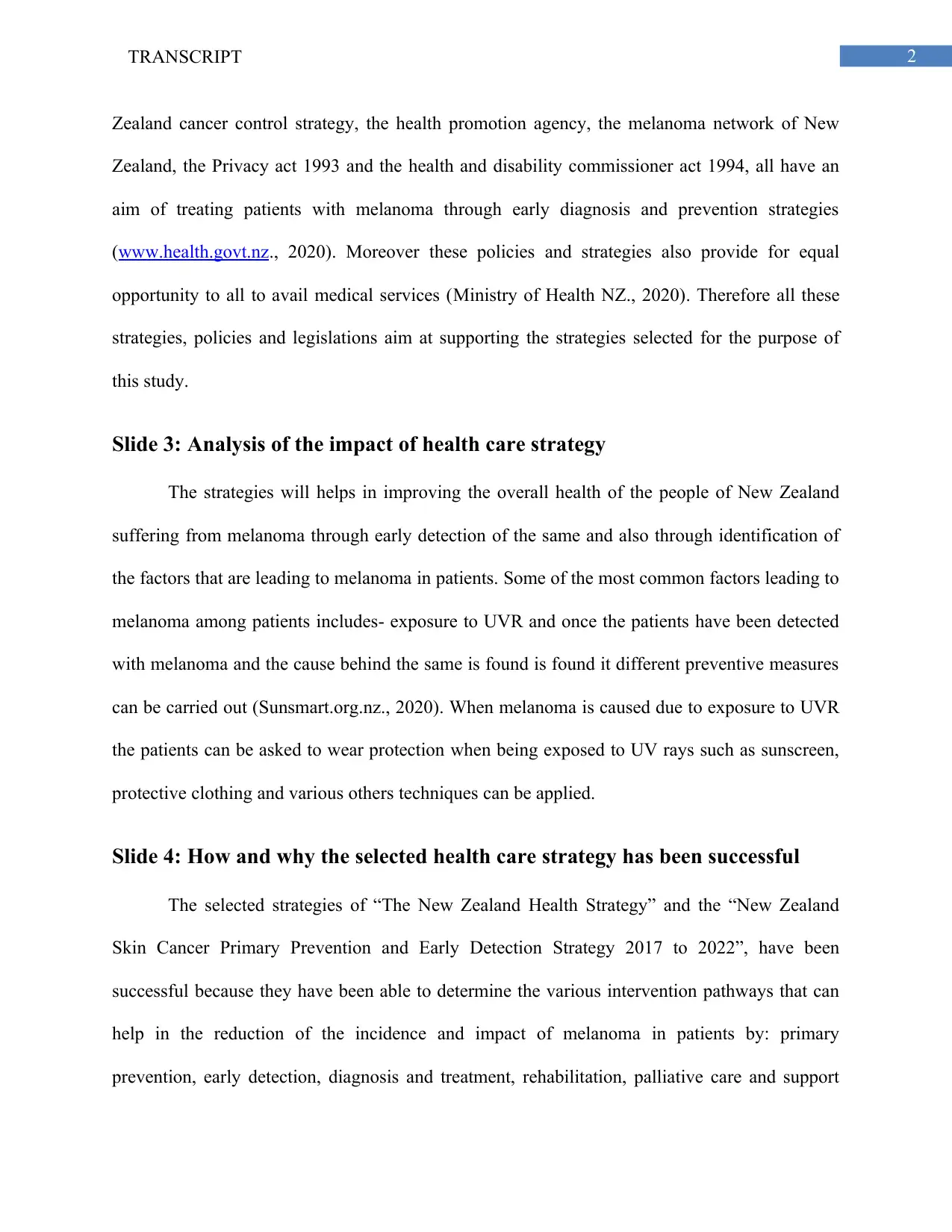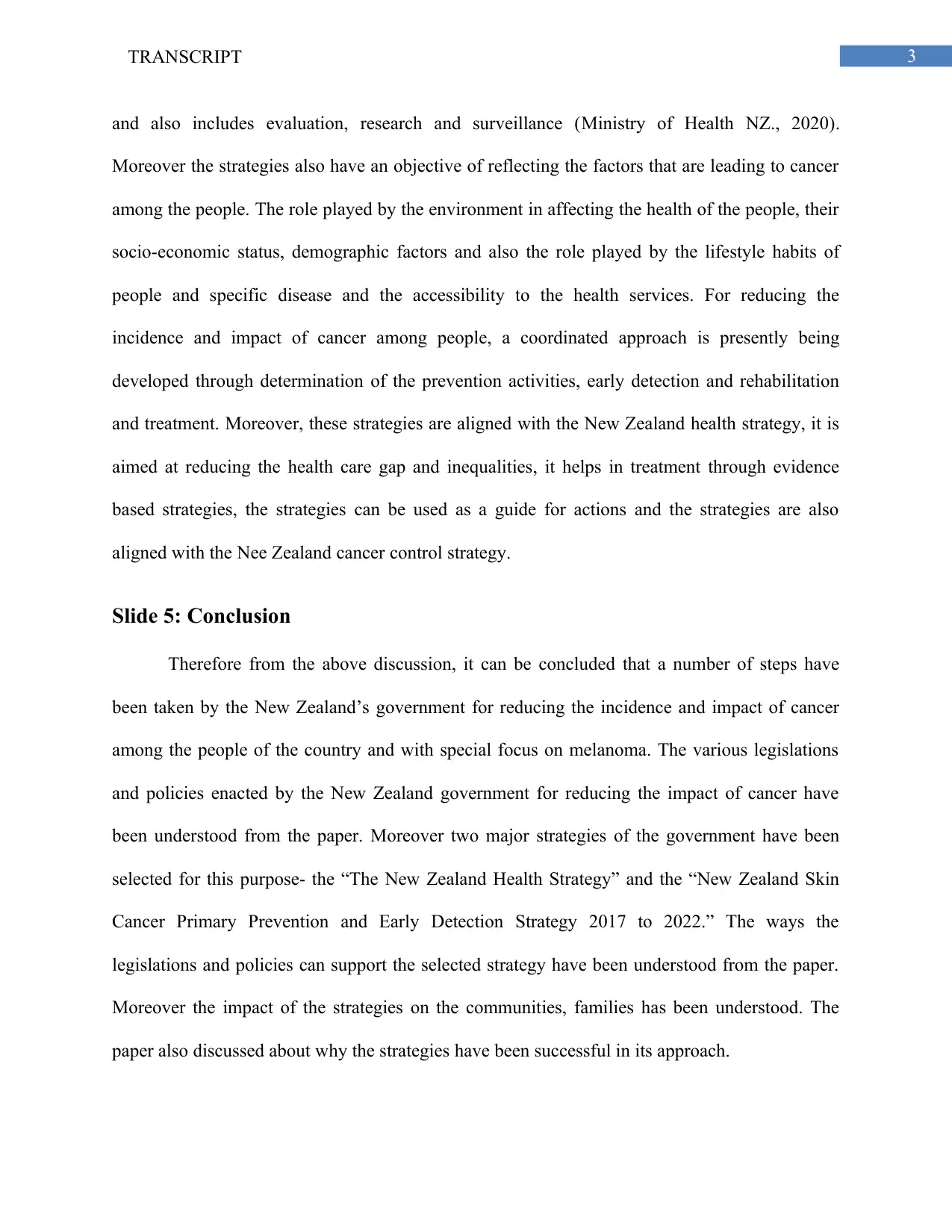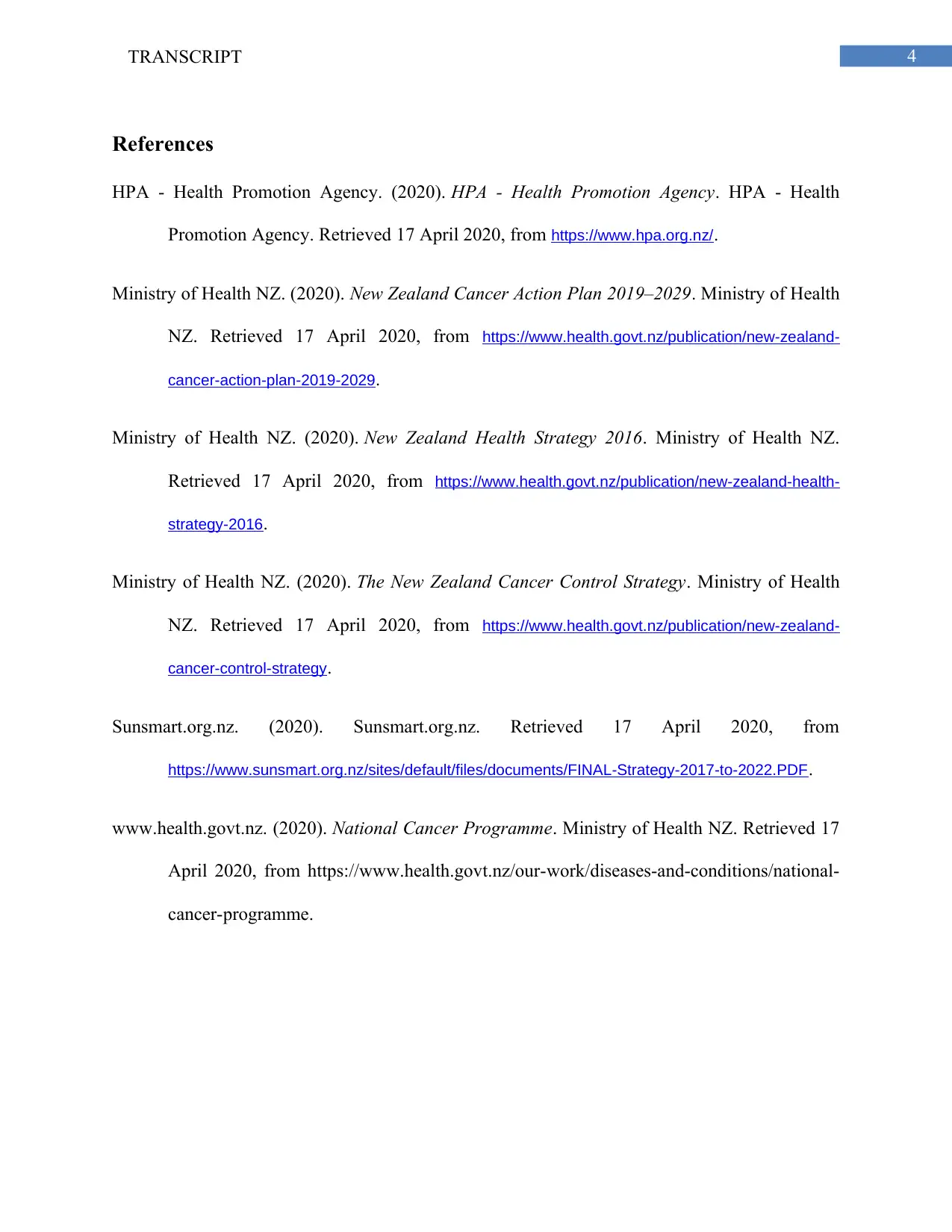Report: Healthcare Policies and Strategies for Melanoma in New Zealand
VerifiedAdded on 2022/09/25
|5
|1159
|21
Report
AI Summary
This report analyzes healthcare strategies in New Zealand focused on melanoma, examining relevant policies and legislations aimed at reducing the incidence and impact of cancer. It explores initiatives by organizations like the Health Promotion Agency and the Melanoma Network of New Zealand, alongside key legislation such as the Privacy Act 1993 and the Health and Disability Commissioner Act 1994, which protect patient rights. The report highlights the New Zealand Health Strategy and the New Zealand Skin Cancer Primary Prevention and Early Detection Strategy 2017-2022, emphasizing their goals of early detection, primary prevention, and reducing cancer impact. It discusses the impact of these strategies, including early detection and identifying factors leading to melanoma, such as UVR exposure. Furthermore, it details the success of these strategies through intervention pathways encompassing primary prevention, early detection, diagnosis, treatment, rehabilitation, palliative care, and research, aligning with the New Zealand Cancer Control Strategy. The report concludes by summarizing the government's efforts to combat cancer, particularly melanoma, and the effectiveness of the selected strategies in achieving their objectives.
1 out of 5






![[object Object]](/_next/static/media/star-bottom.7253800d.svg)